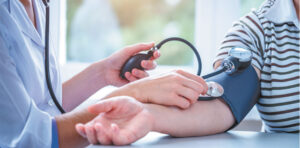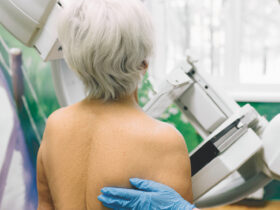By Kathy V. Verdes, APRN, A-GNP-C
 Each May, healthcare providers, advocacy groups, and communities across the nation unite for High Blood Pressure Education Month. This annual observance serves as a critical reminder about the dangers of hypertension—often called the “silent killer” because it typically presents no symptoms while quietly damaging vital organs.
Each May, healthcare providers, advocacy groups, and communities across the nation unite for High Blood Pressure Education Month. This annual observance serves as a critical reminder about the dangers of hypertension—often called the “silent killer” because it typically presents no symptoms while quietly damaging vital organs.
Understanding the Scope of the Problem
Nearly half of American adults—an estimated 116 million people—have high blood pressure, with only about 24% having their condition under control. This widespread health issue is a leading risk factor for heart disease and stroke, the first and fifth leading causes of death in the United States, respectively.
High blood pressure doesn’t discriminate. It affects people of all ages, races, and backgrounds, though certain groups face heightened risks. Black Americans develop high blood pressure more frequently and at earlier ages than white Americans, while Hispanic and Asian populations show varying rates depending on specific heritage.
The Science Behind the Numbers
Blood pressure readings consist of two measurements: systolic pressure (the force when the heart beats) and diastolic pressure (the force when the heart rests between beats). Normal blood pressure falls below 120/80 mm Hg. Readings between 120-129 systolic with diastolic under 80 are considered elevated, while 130/80 or higher indicates hypertension.
Our understanding of blood pressure management has evolved significantly. Current guidelines emphasize earlier intervention and lifestyle modifications, recognizing that even modest elevations increase long-term health risks.
Prevention and Management Strategies
High Blood Pressure Education Month highlights practical steps everyone can take to prevent or manage hypertension:
Dietary Approaches: The DASH (Dietary Approaches to Stop Hypertension) eating plan emphasizes fruits, vegetables, whole grains, and lean proteins while limiting sodium, saturated fats, and added sugars. Research consistently shows this approach can lower blood pressure by 8-14 points—comparable to some medications.
Physical Activity: Regular exercise strengthens the heart, allowing it to pump more efficiently and reducing strain on arteries. Even modest activity—30 minutes of brisk walking five days weekly—can reduce blood pressure by 5-8 mm Hg.
Limiting Sodium: The average American consumes about 3,400 mg of sodium daily, far exceeding recommendations. Reducing intake to 2,300 mg or less can significantly lower blood pressure in salt-sensitive individuals.
Medication Adherence: For those prescribed antihypertensive medications, taking them as directed is crucial. Yet nearly half of patients stop taking their medication within a year of starting—a concerning statistic that education campaigns aim to address.
The Role of Regular Monitoring
Self-monitoring has emerged as a powerful tool in blood pressure management. Home monitoring devices provide valuable data between medical visits and can help detect white coat hypertension (elevated readings only in clinical settings) or masked hypertension (normal readings in clinical settings but elevated elsewhere).
Most importantly, regular monitoring increases patient engagement. When people actively track their numbers, they become more invested in the lifestyle choices affecting those readings.
Dietary Approaches: The DASH (Dietary Approaches to Stop Hypertension) eating plan emphasizes fruits, vegetables, whole grains, and lean proteins while limiting sodium, saturated fats, and added sugars. Research consistently shows this approach can lower blood pressure by 8-14 points—comparable to some medications.
Physical Activity: Regular exercise strengthens the heart, allowing it to pump more efficiently and reducing strain on arteries. Even modest activity—30 minutes of brisk walking five days weekly—can reduce blood pressure by 5-8 mm Hg.
Limiting Sodium: The average American consumes about 3,400 mg of sodium daily, far exceeding recommendations. Reducing intake to 2,300 mg or less can significantly lower blood pressure in salt-sensitive individuals.
Medication Adherence: For those prescribed antihypertensive medications, taking them as directed is crucial. Yet nearly half of patients stop taking their medication within a year of starting—a concerning statistic that education campaigns aim to address.
The Role of Regular Monitoring
Self-monitoring has emerged as a powerful tool in blood pressure management. Home monitoring devices provide valuable data between medical visits and can help detect white coat hypertension (elevated readings only in clinical settings) or masked hypertension (normal readings in clinical settings but elevated elsewhere).
Most importantly, regular monitoring increases patient engagement. When people actively track their numbers, they become more invested in the lifestyle choices affecting those readings.
Community Impact and Policy Solutions
Effective high blood pressure management requires more than individual action. Community-based programs offering free screenings, education, and resources have successfully identified undiagnosed cases and improved control rates in underserved populations.
Policy initiatives addressing food deserts, promoting physical activity through urban planning, and ensuring affordable access to medications also play vital roles in population-level blood pressure control.
The Path Forward
As we recognize High Blood Pressure Education Month this May, the message is clear: hypertension is both preventable and manageable. Through increased awareness, regular screening, lifestyle modifications, and when necessary, proper medication use, we can reduce the burden of this common but dangerous condition.
By making blood pressure control a national priority, we take significant steps toward healthier communities and reduced rates of heart disease, stroke, and other hypertension-related complications.
Are you ready for a consultation?
Your treatment will be performed by a Certified Nurse Practitioner. Schedule your appointment now!
KATHY VERDES APRN, A-GNP- C
Kathy earned her Master’s in Nursing Degree from Kaplan University in 2017. Kathy is certified by the American Academy of Nurse Practitioners (AANP) as an Adult- Gerontology Primary Care Nurse Practitioner (A-GNP-C). Prior to her Advanced Practice Registered Nurse Degree (APRN), Kathy managed a weight loss clinic for over 6 years right here in Naples. Kathy has since then managed acute and chronic care illnesses in different settings, and she genuinely enjoys spending time with her patients.
7385 Radio Road; Ste., 104, Naples FL 34104
(239) 384-9392
www.Naples-Clinic.com








